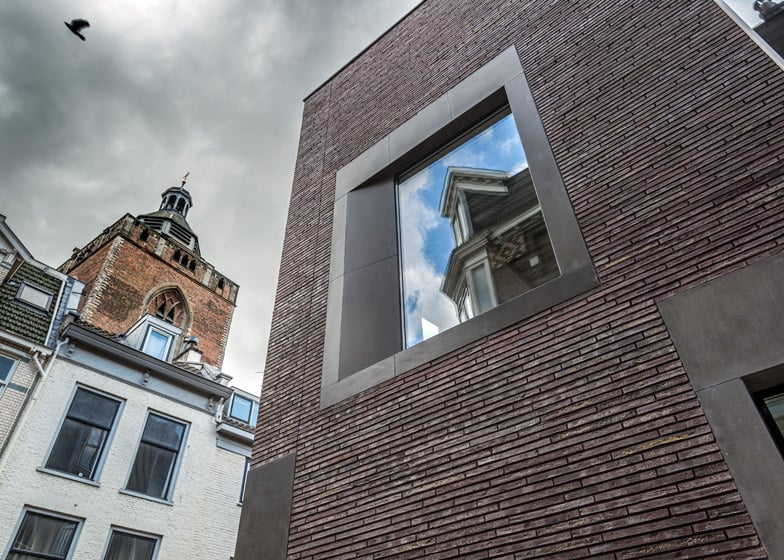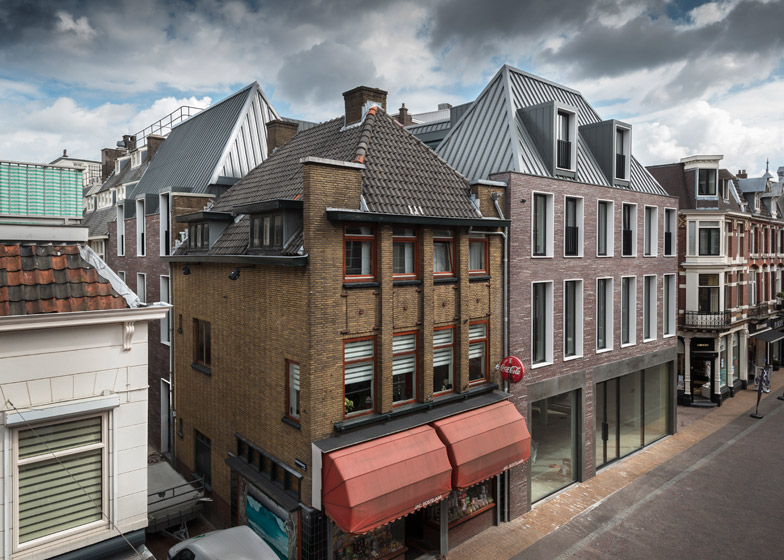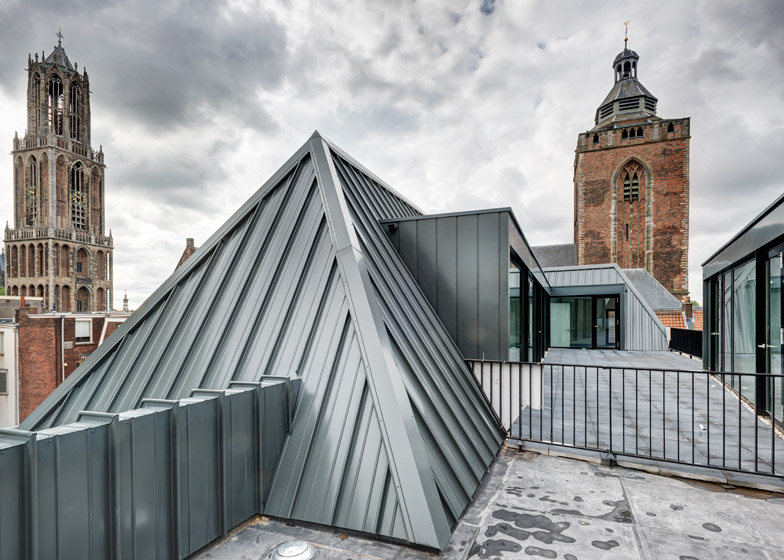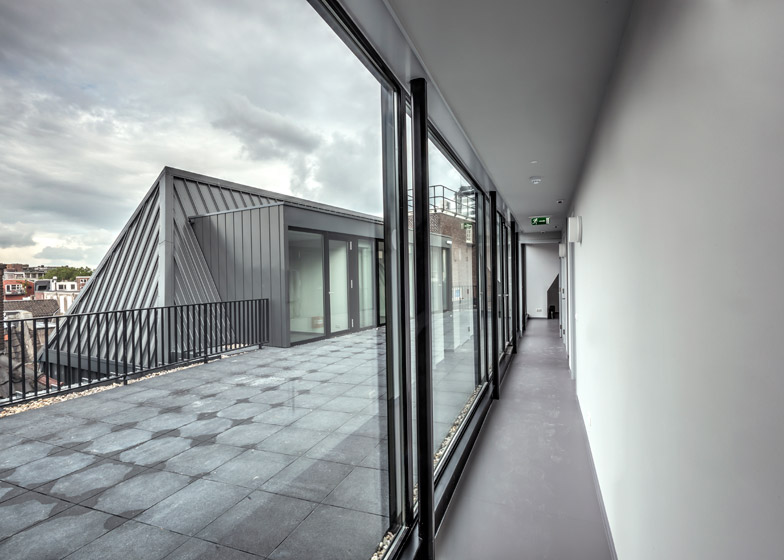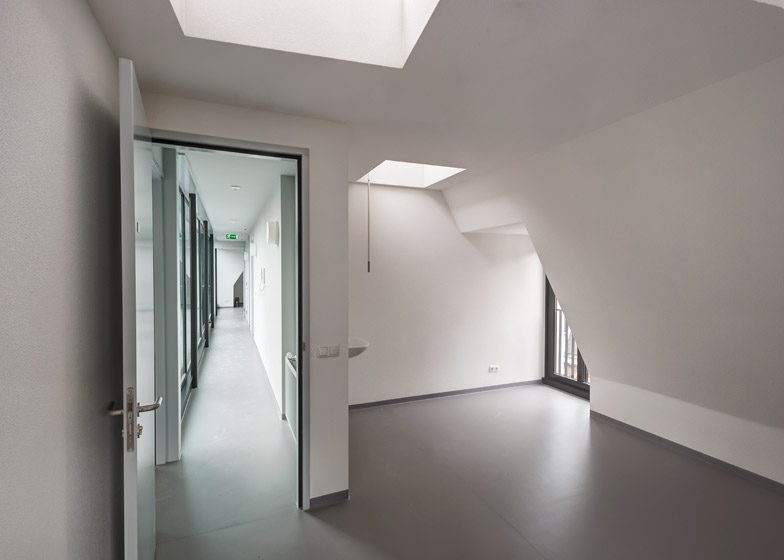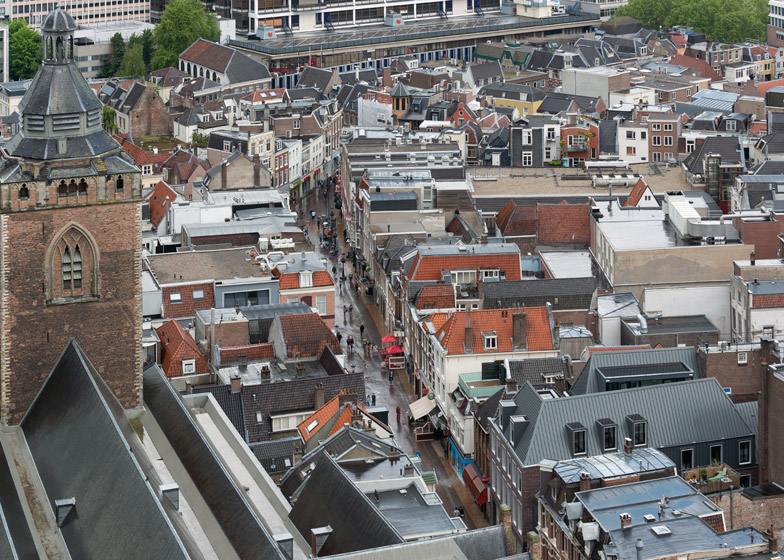Dormer windows rise above the red brick facade of the only modern building on a historic Utrecht street, designed by local office Dreessen Willemse Architecten to house a shop and student residences (+ slideshow).
Dreessen Willemse Architecten designed the 1,500-square-metre structure to replace two dilapidated historic buildings that originally stood on Steenweg Street, one of the oldest streets in the Dutch city.
It houses shops on the two lower levels and student accommodation on the two upper storeys.
The building has a deep, grey ridged roof with protruding dormer windows and a facade made up of slim red bricks.
The Heerlen-based architects chose these features to reference the period properties on either side, but paired them with modern materials and forms that include large expanse of glazing and slender frames.
"As a condition for the demolition, the municipality required that a 'new monument' be built in its place," said the studio.
"The uneven division of the front facade, not visible at first glance, refers to the two buildings that originally stood there and conforms to the parcelling of the plots on the Steenweg."
Shop space is arranged over the first two levels of the building, connected by an escalator. On the ground floor, large panes of glass form a generous shopfront, while the upper shop floor has a row of tall windows.
The window openings on the upper floors are arranged in a rhythm that matches those of the buildings they face. They are framed with thick sections of pale grey stone that protrude slightly from the brick facade.
"Where the building has a classical form language, a modern materialisation and detailing is applied," said the architects.
One side window is positioned out of kilter with the pattern of the others. Its glazing is set at an angle, directing views towards the main street rather than into a neighbouring property.
The student housing comprises 13 bedrooms, a common room and shared bathrooms.
Glazed doors open out of dormer structures on the third floor, which is housed within the roof, onto a communal terrace set in the crook of the L-shaped roof structure.
The building spans over a mediaeval cellar, which has now been converted into a storage area for students' bikes and shop stock.
Photography is by Arthur Bagen.
Project credits:
Architect: Dreessen Willemse Architecten in collaboration with diederendirrix architects
Real estate developer: FiMek estate
Structural engineer: IMd Raadgevende Ingenieurs
Building services consultant: Huisman & van Muijen
Consultant for building physics, fire safety and acoustics: Nieman Raadgevende Adviseurs
General contractor: Burgland Bouw

